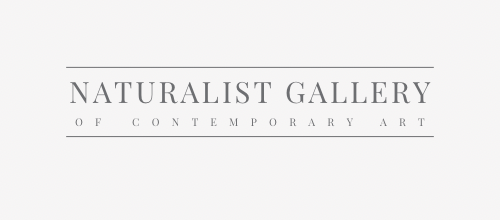Understanding the intricacies of art pricing and commission structures is vital for collectors navigating the art market.
A typical art gallery commission ranges from 50% to 60% for two-dimensional works and 33.3% to 40% for three-dimensional works. This commission covers marketing, promotion, storage, and exhibition costs.
This guide explores key factors influencing art pricing and the typical commission arrangements between art dealers and artists.
Explore our curated selection of contemporary artists from around the globe.
Naturalist Gallery offers artist representation internationally. Apply your art.
Factors Influencing Art Pricing
1. Artist's Reputation
- Impact: Established artists command higher prices due to their proven success and recognition.
- Consideration: Emerging artists may offer potential for value appreciation.
2. Artistic Merit
- Criteria: Quality, uniqueness, skill, creativity, and conceptual depth.
- Effect: High artistic merit often correlates with higher prices.
3. Market Demand
- Dynamics: Trends, collectors' preferences, exhibitions, and media coverage.
- Result: Increased demand can significantly raise an artwork's value.
4. Medium and Size
- Influence: Different mediums and sizes affect production costs and perceived value.
- Observation: Larger works and costly mediums like oil paintings often fetch higher prices.
5. Sales Records
- Role: Auction results and private sales set benchmarks for pricing.
- Example: Record-breaking sales can elevate an artist's market value.
Commission Structures: Art Dealer and Artist
1. Art Dealer's Commission
- Range: Typically 50%-60% for two-dimensional works, 33.3%-40% for three-dimensional works.
- Coverage: Includes marketing, promotion, storage, exhibition costs, and market expertise.
2. Artist's Share
- Percentage: Generally 40%-50% of the sale price.
- Variables: Influenced by the artist's reputation, negotiation, and contractual specifics.
3. Negotiation and Direct Sales
- Flexibility: Commission structures can be negotiated, especially for established artists.
- Alternative: Some artists opt for direct sales to retain full price but assume marketing responsibilities.
Practical Insights for Art Collectors
1. Gallery Commissions
- Justification: High commissions cover business costs like space, marketing, and sales staff.
- Value: Galleries provide professional services and market access, justifying their commissions.
2. Pricing Strategies
- Inclusion of Commission: Artists must factor in gallery commission when setting prices.
- Consistency: Maintain uniform pricing across different sales channels.
3. Negotiating Commissions
- Variability: Commissions can range from 33% to 250%, depending on the venue.
- Factors: Consider your career stage, economic conditions, and previous sales when negotiating.
4. Building Gallery Relationships
- Effort: Securing and maintaining gallery representation requires preparation and work.
- Selectivity: Choose galleries that actively promote their artists and engage buyers.
5. Evolution of the Art Market
- Digital Shift: The internet offers artists tools for self-promotion, altering traditional dynamics.
- Long-Term Benefits: Galleries may achieve higher sale prices, benefiting artists in the long run.
For art collectors, understanding art pricing and commissions is essential. Factors like reputation, artistic merit, market demand, medium, size, and sales records influence pricing. In commission structures, dealers typically take 50%-60%, with the artist receiving 40%-50%. Successful navigation of the art market involves recognizing these nuances, making informed decisions, and maintaining respectful relationships with galleries.
Learn more About Naturalist Gallery of Contemporary Art.
You may also find the following articles helpful:
Form: Understanding Dimensionality
Tone in Art: Understanding Color Value
Line: Types, Techniques, Element of Art
How to Get Your Work in an Art Gallery





